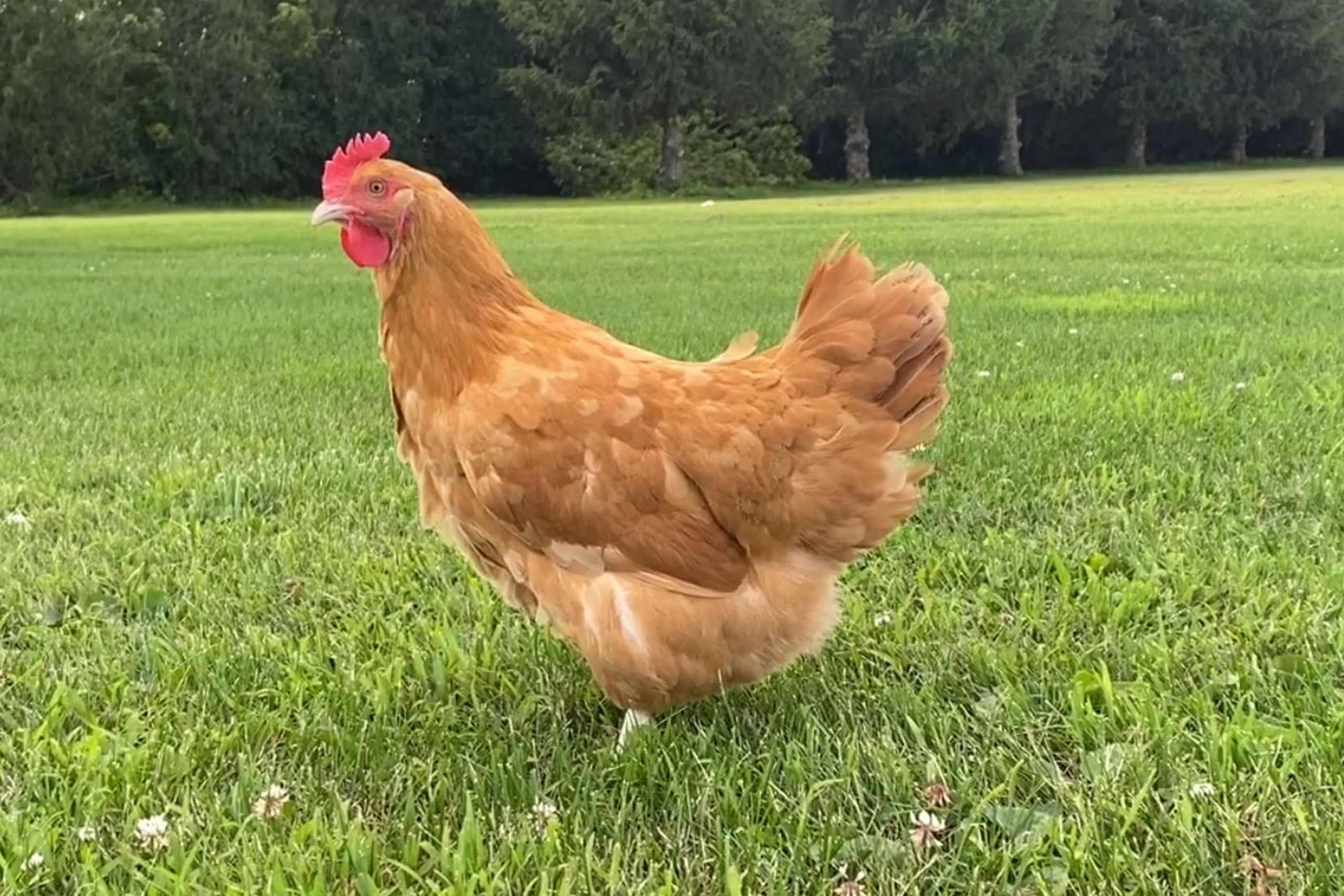In many ways chickens are like people. Both species come in a dazzling array of sizes, body shapes and colors. On top of easily seen features are less visible traits. Chickens, like people, are individuals. They have personalities. Watch a flock and soon behavioral differences appear, and close observation makes keeping chickens fascinating. Sometimes their antics are downright hilarious.
Physical characteristics and behavioral traits are generally predictable by chicken breed. Orpingtons, for example, are usually calm, quiet, and inquisitive, while leghorns excite easily and often make a racket. They can also fly like a pheasant. Yet even within a breed individual differences are sometimes obvious. A rare occasional Orpington might be a nervous nelly, and once in a while a quiet and calm leghorn hen is different from her excitable sisters.

People who’ve decided to start a chicken hobby for the first time can be easily baffled by the huge diversity of breeds offered by Hoover’s and other hatcheries. Descriptions in the catalog and website generally share likely traits of each breed, but perhaps a more fun way to group chickens is by traits often used to describe people. Here goes:
Workaholic: Some breeds get right down to work. They start laying early, leave nearly a daily egg in the nest, and often have the longest lay cycle before taking a break and molting. If getting lots of eggs is important, choose businesslike workaholic chickens. These include Leghorns or California Whites for white eggs or Rhode Island Reds or any of the egg laying hybrids for brown eggs.
Showgirls: While many breeds are somewhat plain Janes others strut around showing their bright colors and intricate feather patterns. Among the showgirls are brown Leghorns, Wyandottes of several color patterns and Speckled Sussex. Some showgirls are also great layers while others are kept more for their beauty than production.
Aerialists: Most heavy brown egg laying breeds have a tough time flying. They’re grounded by weight, making them easier to confine with a low fence. Other breeds are aerialists who delight in soaring over even the tallest fence to enjoy the view from tall tree limbs. Watching chickens fly is fun and some people love keeping these active small breeds that usually lay white eggs and love flying more than walking.
Vocalists: All roosters crow and all hens have a vocabulary that includes warning calls, pleasure clucks, and proud sounds during laying. As a general rule – again there are always exceptions – lightweight white egg laying breeds are the loudest vocalists, while heavy brown egg layers are a little less likely to raise the ire of neighbors. Heavy breed roosters usually crow a little less often than their lightweight cousins, but they do it with impressive volume.
Intrepid Explorers and Scroungers: Some chickens love to explore. If allowed to roam the yard they’ll soon discover its nooks and crannies. They scratch up mulch and dead leaves to discover tasty worms and insects hiding underneath. Explorers range far and wide. These scroungers don’t need as much store-bought food as homebodies, but they can be hard to catch and are vulnerable to predators when ranging around the yard. Good flyers are usually intrepid explorers, and these are often smallish white egg layers, but some brown egg hens also love the freedom to explore. Brown leghorns are able scroungers and flyers with dark feathers that may camouflage them from predators.
Tightwads: Workaholic chickens lay an egg nearly every day. Tightwads are just the opposite. They may lay only half as many eggs in a year as the working girls. Some lay even fewer eggs. Usually the most beautiful showgirls are often the biggest tightwads. Cochins, for example, are beautiful, calm and fun to be around but not the best producers of the raw material for an omelet. Perhaps the biggest egg tightwad is the Cornish Rock. These grow like crazy and produce tasty meat quickly, but in the unlikely event they live long enough to lay eggs they won’t lay many. They are true tightwad hens.
Steady Eddies: Steady eddies are the heart and soul of most backyard flocks. These breeds may not lay the absolute most eggs, but they aren’t slouches. They lay most days. Some are colorful enough to almost rival the true showgirls, and most are calm and pleasant to be around. They’re easy to manage, rugged, and produce eggs for many years. These are the tried and true old-fashioned breeds that are as appropriate today as they were in great grandma’s day. Rhode Island and New Hampshire Reds, Plymouth Rocks, Australorps, Orpingtons, Dominiques, Brahmas, and Jersey Giants are all delightful steady eddies. Wyandottes are steady eddy showgirls that combine beauty and production.
It’s easy for a newcomer to chicken husbandry to be baffled by the many breeds and their huge differences. Steady eddies, those tried and true old-fashioned breeds, or workaholic brown egg hybrids might be the best choice for novices. Hoover’s makes it easy to buy several breeds in one small order. Five or six different types of steady eddies in a small flock combine diverse colors with strong egg production. With more experience adding aerialists, showgirls, and scroungers adds zest to keeping chickens.